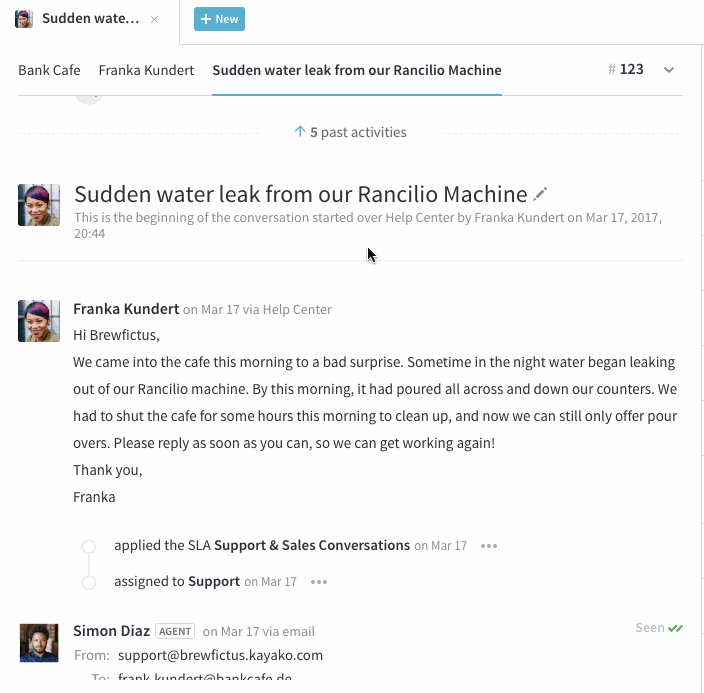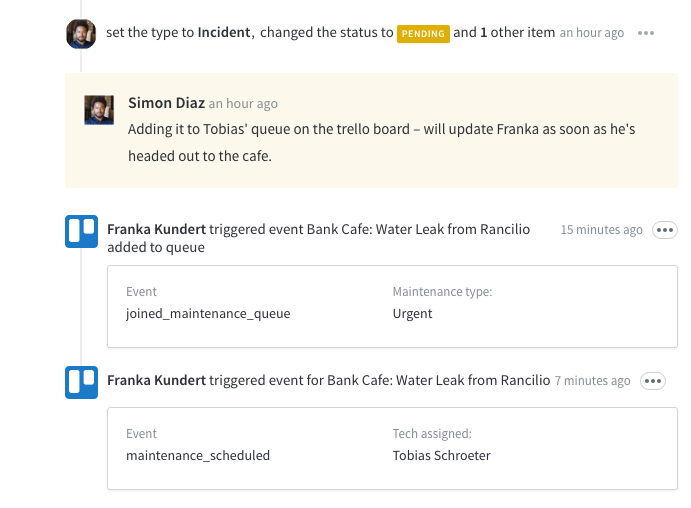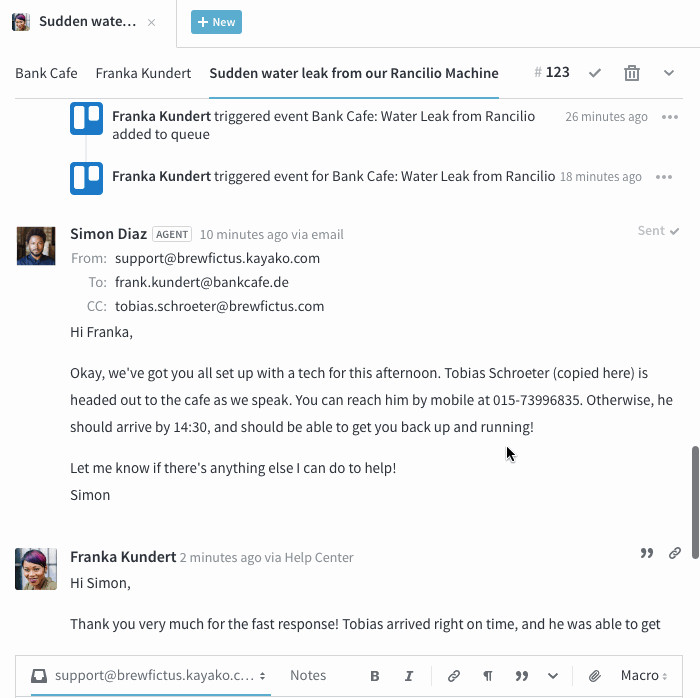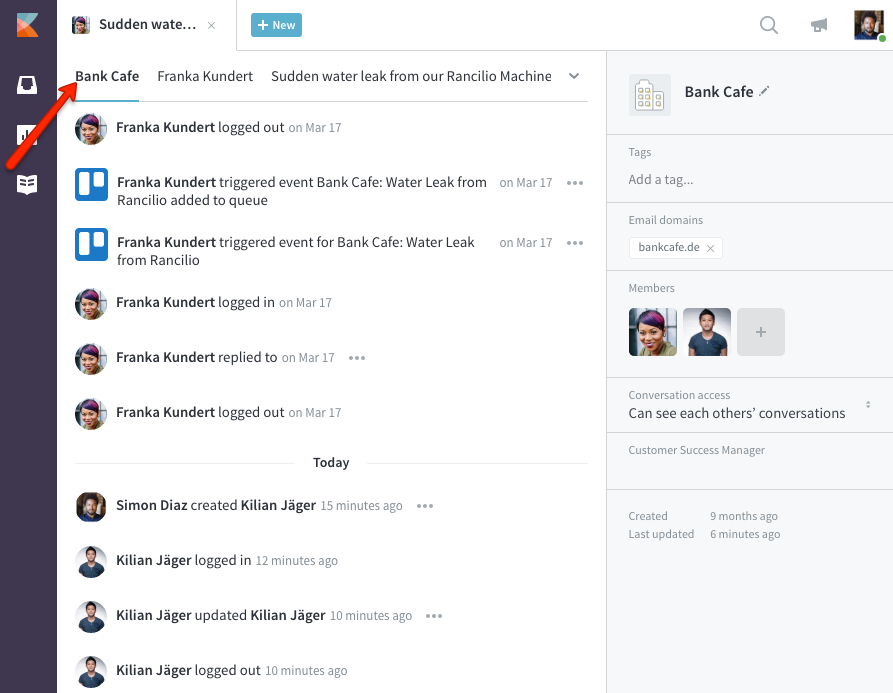Every conversation your team has with a customer is just one part of that customer’s journey with your company. In order to provide the best support possible, your team needs to see not only their messages back and forth with a given customer, but also as much context about that customer’s experience as possible.
Has the customer recently searched for or read any articles on your Help Center? Has anyone else from their company reached out about a related issue? Did the customer recently make a purchase on your online store?
Kayako puts the answers to all of those questions – and lots more – at your fingertips, by incorporating key insights from each customer’s journey directly into their support conversations.
In this article, we’ll give you a tour of Kayako journeys and conversations, so your team can go into every support interaction equipped with as much context as possible.
Exploring customer journeys and conversations
In order to get the full story on your customers’ experience, you’ll be drawing on information from three places:
- Conversations provide not only a complete record of every message back and forth on a particular topic but also any relevant contextual details. That could include updates to the conversation made by a support agent, actions performed on the conversation by Kayako automations, and customer activities from either Kayako or external systems.
- Customer journeys give you a comprehensive view of a customer’s activities and behavior over time. The customer journey includes everything they’ve done in Kayako or connected external systems, across all of their conversations, since they first contacted your support team.
- Organization journeys provide a complete view of all of the activities and interactions from every customer in that organization. From here, you can see a chronological account of every message, satisfaction rating, Help Center search, and much more, from any member of the organization.
To get an idea of just how powerful each of these tools can be, let’s have a look at an example:
Interpreting conversations with context
Let’s use Brewfictus, our favorite fictional coffee equipment supplier. One of their senior support advocates, Simon, is fielding an urgent request from Franka, the owner of the Bank Cafe, whose espresso machine has sprung a leak. Let’s start by looking at the beginning of their conversation:
When Simon first opens up the conversation, he can scroll up to see the actions that Franka has taken leading up to her sending her first message. The conversation also shows him any automated actions that happened to the conversation when it first landed in Kayako, like being assigned to an SLA, as well as to a particular team.
When he replies to Franka, his message is added to the conversation, as are the updates he makes to the conversation’s type, status, and assignment. All of this will make it easy for him – and any other agent on his team – to follow along with conversation’s progress.
In addition to direct updates to the conversation from within Kayako, the conversation will also reflect any relevant activity from external systems that Brewfictus has hooked up to Kayako. For example, the Brewfictus maintenance team uses Trello to track their queue of maintenance visits, and they’ve set up a Zapier automation to feed any important updates back into Kayako.
Here, Simon can see notifications for when he’s added a new card to Trello for the maintenance visit, as well as when their technician, Tobias, has received and scheduled the visit.
Finally, after a few more emails, Simon confirms that Tobias was able to get Franka back up and running.
Satisfied that the problem is solved, Simon can mark the conversation complete.
Seeing the big picture with customer and organization journeys
Even though this one conversation may be complete, it’s only one facet of the Brewfictus relationship with both Franka and the Bank Cafe overall.
At any point, from any conversation, Simon or his teammates can switch contexts to have a look at the full journey that the customer or organization has taken with their team.
From our example conversation above – or from any conversation he has with Franka – Simon can quickly switch to the customer journey tab, for a complete picture of Franka’s customer experience over time:
If that doesn’t give him the detail he’s looking for, though, he can take another step back, and have a look at the organization journey instead:
Here, Simon can see not only what Franka’s been up to, but also any activities from her colleagues at the Bank Cafe, as well.





Kelly O'Brien